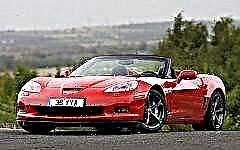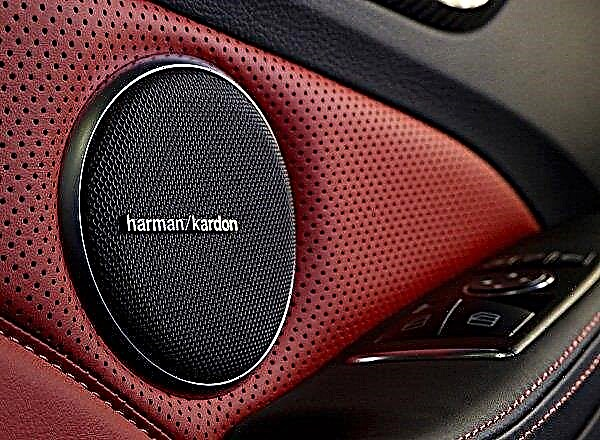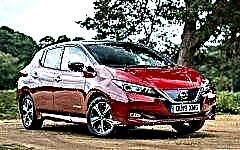

The content of the article:
- External appearance
- Salon of the new Leaf
- Specifications Nissan Leaf e plus 2020
- Price list and equipment level Nissan Leaf e plus 2020
In September 2017, Nissan introduced the second generation of the Leaf electric car to the world, which debuted simultaneously in two cities - Los Angeles and Tokyo. In Europe, the car was presented in Frankfurt a few weeks later.
And now, two years later, the manufacturer rolled out to the public a more powerful modification of the electric hatchback - the Nissan Leaf e plus.
The novelty differs from the usual Leaf by a more powerful traction battery and a more efficient electric motor, as well as an improved charger, which significantly speeds up the recharging process.
But before moving on to a more detailed analysis of the Leaf e +, it is worth noting that during its existence (since 2010) the model has sold over 380 thousand copies, and the Japanese even released a special "charged" version of the Leaf, which received the "Nismo" prefix in title.
The appearance of the new Nissan Leaf e Plus

From the point of view, the exterior design of the Nissan Leaf e plus differs from the “civilian” version of the model only by decorative blue strips located on the bumpers. This means that the "muzzle" of the car meets its owner with menacingly squinting optics, a trapezoidal false radiator grille framed by chrome edging, and a neat front bumper with built-in fog lights.

The knocked-down profile reveals heavily piled A-pillars, a domed roof, massive C-pillars, and elegant splashes of the sidewalls.

The rear of the body flaunts menacing marker lights, a compact trunk lid, partially painted black, and a monumental bumper. The external dimensions of the electric car are as follows:
| Length, mm | 4480 |
| Width, mm | 1790 |
| Height, mm | 1545 |
| Wheel base length, mm | 2700 |
The ground clearance of the Nissan Leaf e plus is 150 mm, which is enough for confident driving on the highway and in the city. Buyers of the new Leaf e plus can choose from 8 solid colors or 7 two-tone body colors.
Salon of the new Nissan Leaf e plus 2020

The interior of the Nissan Leaf e + has an eye-catching, yet unobtrusive design. In front of the driver is a digital instrument panel and a three-spoke multifunction steering wheel with a slightly cut lower rim.
In the central part of the dashboard, unlike the usual Leaf, there is not a 7-inch, but an 8-inch touchscreen display with an improved navigation system installed. Directly below it is a laconic control unit for the in-cabin climate, and even below it is the engine start button, seat heating activation buttons, USB and a socket outlet.
The quality of materials finishing, assembly and ergonomics are at a high level and do not raise any questions even with close examination.

Front riders are offered comfortable seats with well-defined lateral support, optimal density and a wide range of adjustments. Between the seats is a small armrest, an electronic parking brake activation button and a pair of cupholders.
The rear sofa easily accommodates three adult passengers, with ample space in all three directions.
Trunk volume is in line with the criteria for the C-class - 435 liters. If necessary, the backrests of the rear sofa can be folded, significantly increasing the amount of loading space. True, it is worth noting that with the backs of the rear sofa folded, an impressive "step" is formed.
A nice bonus is the ability to choose one of several interior trim colors, not to mention the seat upholstery materials.
Specifications Nissan Leaf e plus 2020

Under the hood of the electric Nissan Leaf e +, a more efficient 215-horsepower electric motor is installed. with. and 340 Nm of limit torque. Thanks to this, the car has better dynamics - acceleration from 0 to 100 km / h takes about 6 seconds, while from 80 to 120 km / h the car accelerates 13% faster than a regular Leaf.
The maximum declared speed reaches 160 km / h, which is sufficient not only for city driving, but also for highways.
Also, the novelty acquired a more capacious battery (62 kW / h), which replaced the 40-kilowatt one. Thanks to the more "hardy" battery, the maximum range of the electric car has increased. So, according to the EPA method, a car can cover 364 km, and according to the WLTC Japan and JC08 standard - 458 and 570 km, respectively.
An important point - the manufacturer provides a warranty for the battery for 8 years or 160 thousand km (whichever comes first).
Following the improved battery, the charger has undergone modernization. Now it has a rated power of 70 kW (maximum up to 100 kW), which makes it possible to replenish the energy reserve from 0 to 80% in just 40 minutes. A full recharge, despite having a more powerful recharge, takes longer than charging a regular Leaf.
At the heart of the car, as before, is a front-wheel drive Nissan EV bogie, mostly made of high-strength steel grades. The front suspension has an independent architecture and is represented by MacPherson struts, and the rear semi-independent suspension has a torsion beam (both in the first and in the second case, anti-roll bars are used).
The steering sports an electric power-assisted steering system, and the braking system boasts ventilated disc mechanisms on both axles.
Of the interesting features of the electric car, we can single out the presence of the unique e-Pedal technology, which allows you to slow the car down to a complete stop without using the brake. The driver is simply required to remove his foot from the accelerator pedal, after which the car will slowly begin to lose speed.
Price list and equipment level Nissan Leaf e plus 2020

The Nissan Leaf e plus is currently available for purchase in Europe. So, in the German market, an electric car is offered at a price of 44.7 thousand euros, while the price of an ordinary Leaf starts at 36.8 thousand euros.
The list of standard equipment for Leaf e plus includes:
- front and side airbags;
- anti-lock braking system, as well as ESP and EBD systems;
- LED optics front and rear;
- climate control;
- multifunctional steering wheel;
- seat heating system for front riders;
- electric drive of glass of all doors;
- media system with 8-inch display;
- rear spoiler;
- decorative trims in blue on the front and rear bumpers;
- Increased capacity battery;
- e-Pedal system;
- folding rear sofa in a ratio of 60:40;
- light-alloy wheels 16 ";
- seat belts;
- back view camera;
- ProPilot system and other "chips".
Conclusion about the electric car Nissan Leaf e plus
Nissan Leaf e plus is an attractive car inside and out, equipped with a productive and long-range "stuffing", and offers its customers a wide range of standard and optional equipment.
According to preliminary information, in 2020 an electric car can reach the Russian market, but even if this does not happen, the car has every chance of becoming a real bestseller (however, today it is).
Nissan











